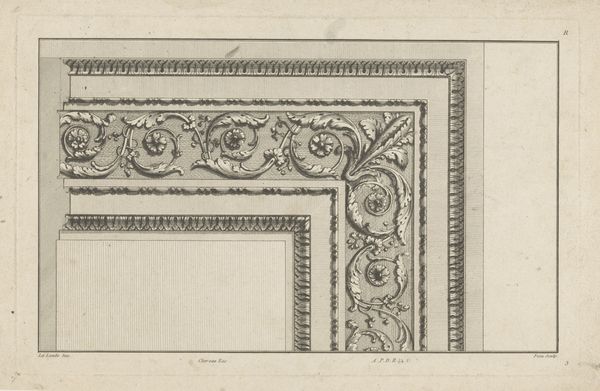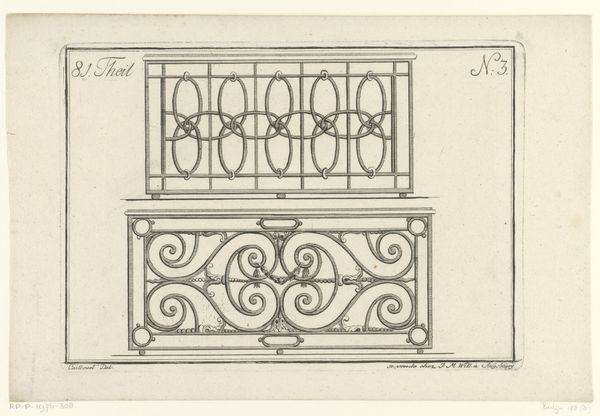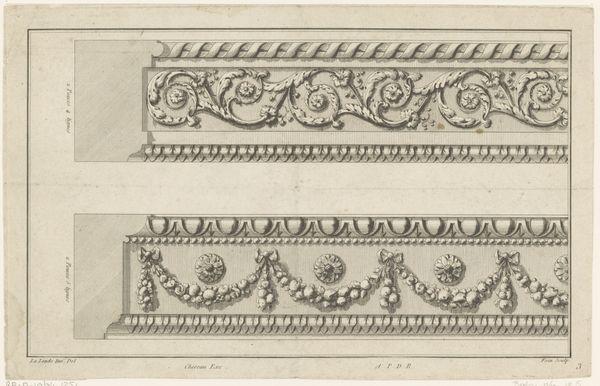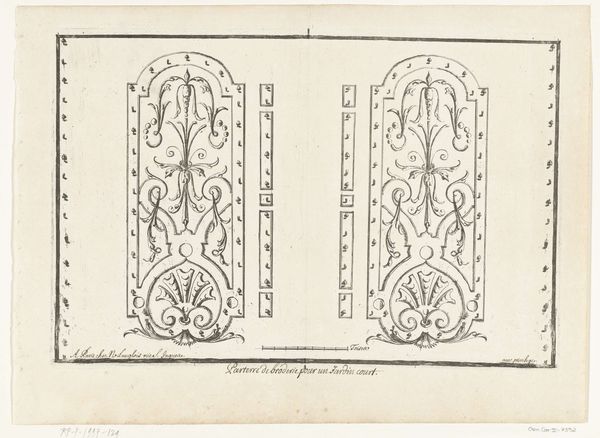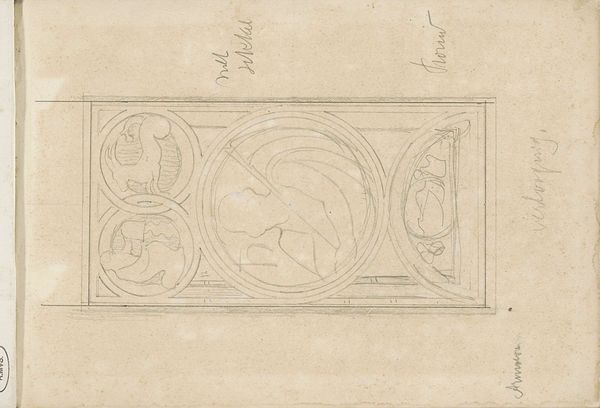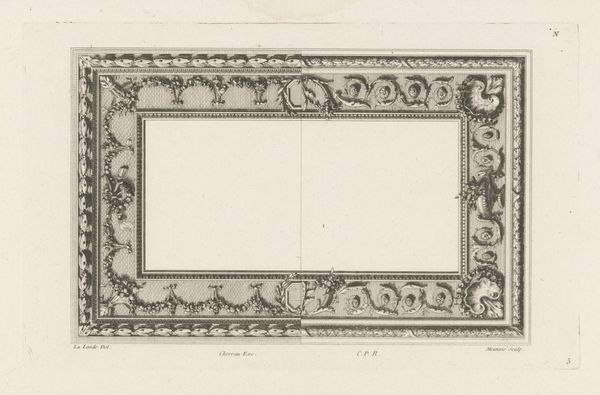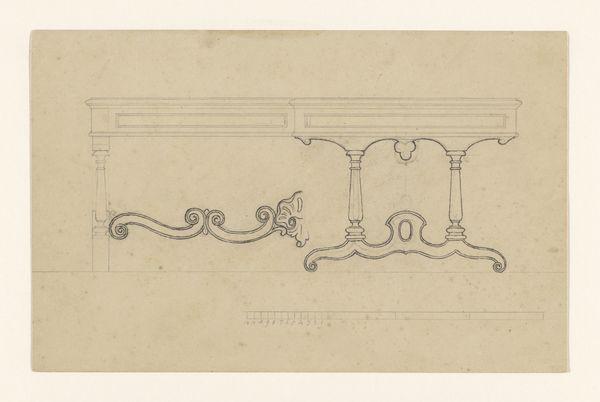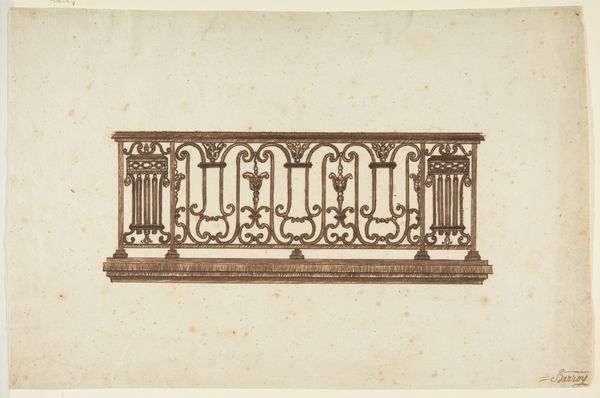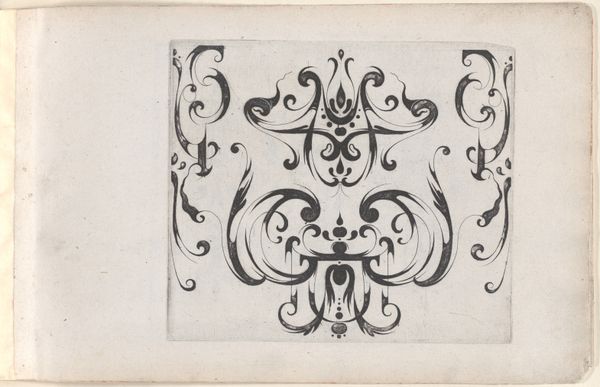
Dimensions: height 206 mm, width 290 mm
Copyright: Rijks Museum: Open Domain
Editor: Here we have a work entitled "Hekwerk met bladmotieven," which translates to "Fencing with Leaf Motifs," dating roughly from 1737 to 1806, by an anonymous artist. It’s an engraving, a pen and ink drawing of baroque ironwork, held at the Rijksmuseum. The intricacy is what first strikes me. What catches your eye? Curator: The drawing speaks volumes about the socioeconomic landscape of its time. Engravings like these were essential for disseminating design ideas, but let's think about what's absent. What about the labor that's behind realizing it in iron? How do we factor the craftsperson in shaping this art? Editor: I hadn’t really considered the physical process beyond the drawing itself. So the engraving isn't just the artwork, but a means of production? Curator: Precisely. Consider the hierarchy: the original designer, probably from a wealthy class, sketches the idea. The engraver meticulously copies this to prints. Lastly the blacksmith fabricates, and these artisans were likely from lower socioeconomic tiers. We need to unpack their contributions and consider the social relationships embedded in the object itself. What about the distribution of those engravings – who consumed them and where did the material come from? Editor: That's fascinating; so much is happening outside of the design itself. Curator: Indeed, and these prints facilitate a visual language among different tiers of artisans. It’s an exchange deeply embedded in social structures and modes of production. They speak to trade networks, resource accessibility, and the consumption habits of the wealthy. What else do you notice now? Editor: I see now the link between design, reproduction, labor, and consumption—the whole material network supporting the piece. It completely changes how I appreciate the image! Curator: Exactly, it invites us to ask crucial questions about artistic creation and class distinctions.
Comments
No comments
Be the first to comment and join the conversation on the ultimate creative platform.

